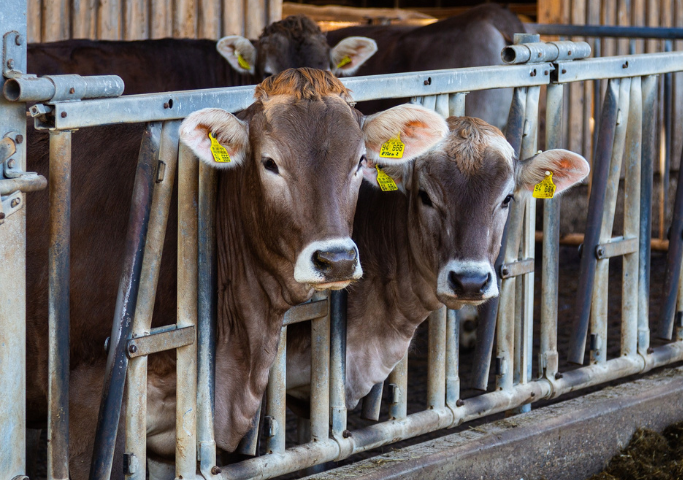
Introduction
The Canadian dairy industry is known for its high standards of quality and safety, as it is a strong and viable industry across the country. In Canada, 98% of dairy farms are family owned and operated across all provinces of Canada. The provinces of Ontario and Quebec have the highest concentration of farms with 81% of the total, followed by the western provinces with 13%, and 6% in the Atlantic provinces. One of the characteristics of Canadian dairy farms is that they milk an average of 95 cows per farm.
Dairy farms: small, medium or large?
Today, Canadian farms come in all shapes and sizes. Some farms can milk as many as 30 cows, and there are only a handful of farms that have around 1,000 cows milking. Dairy farm averages hover around 95 milking cows. Eastern Canada tends to have a lower average number (an average of 75 to 95 cows per farm in Quebec and Ontario), while the western provinces tend to average 130 to 175 milking cows per farm. All farms, regardless of size, are subject to the same strict standards and practices in terms of animal care and health, environmental sustainability and purity of the milk produced, which is why whether large, medium or small, all farms produce some of the highest quality milk in the world.
Canada has one of the highest average milk per cow ratios in the world (8,738 kilograms per 305 days), with an average daily production per cow of 30 liters of milk per day, characterized by the fact that cows spend most of their production time under housing systems, ensuring the necessary environmental and welfare conditions to be able to produce in the best way. The most common dairy breed to be found is the Holstein breed, having a special phenotype and prepared for the environmental conditions of Canada, and very well-known and spread throughout the rest of the world. This breed constitutes almost 94% of the Canadian dairy herd.
Production policies
Canada’s dairy industry is represented by the Dairy Farmers of Canada (DFC), a national organization. Founded in 1934, it has become responsible for policy, marketing, nutrition and market research activities related to milk production in Canada, and is the voice of Canadian dairy farmers.
Many milk safety and quality programs and services help dairy farmers across Canada produce the highest quality and safest dairy products for consumers. To ensure that dairy animals across Canada are kept in healthy, well-maintained conditions, Dairy Farmers of Canada and the National Farm Animal Care Council have collaborated with academia and stakeholders to create and update the Code of Practice for the Care and Management of Dairy Cattle. The Code serves as the basis for on-farm audits to verify animal care.
The Canadian dairy sector operates under a supply management system based on planned domestic production, administered pricing and dairy import controls. The dairy sector ranks second (based on farm cash receipts) in the Canadian agricultural sector, just behind red meat.
Conclusions
In addition to being world-renowned for their excellence, Canadian milk and dairy products are recognized for their variety and quality. The application of strict quality standards on dairy farms and in processing plants reinforces this international reputation, along with a strong commitment to good animal welfare practices and environmental sustainability that dairy farming families carry forward, understanding that they are the key to keeping dairy production in Canada on the right direction.
Author: Felipe Mendy (veterinarian)



